Martin Indyk explains that President Trump’s speech recognizing Jerusalem as the capital of Israel did too little to fulfill the annexationist appetite of Israel’s right wing, while it also left Palestinians and their Arab and Muslim supporters deeply dissatisfied. This piece originally appeared in the Financial Times.
There were several curious elements in Donald Trump’s announcement on Wednesday that he was reversing 70 years of U.S. policy and officially recognizing Jerusalem as Israel’s capital.
Normally on such occasions, the president stands alone in front of the cameras. This time Mike Pence, his vice-president, stood behind his right shoulder. Mr. Pence is the president’s conduit to evangelical Christians, a key part of his political base. They are prepared to overlook any moral lapses by the president if he is seen to deliver on causes they cherish, such as the appointment of a conservative judge to the Supreme Court or the championing of Israel.
The vice president’s presence in the picture was a signal that Mr. Trump’s move was driven above all by an appeal to his base, like his intended withdrawal from the Paris climate accord and the scrapping of the Trans-Pacific Partnership trade agreement.
It was also curious, though little noticed, that right after signing the proclamation recognizing Jerusalem as Israel’s capital, Mr. Trump also signed the national security waiver enabling him to avoid moving the U.S. embassy to the city for another six months. Since the campaign promise he made was to move the embassy, the waiver seemed to contradict his claim of standing by his word. Moreover, senior aides said it would take years to build an embassy in Jerusalem, possibly requiring the president to sign many further waivers.
Mr. Trump could have ordered his ambassador in Israel to move his office and top staff immediately to a recently completed U.S. consular facility in west Jerusalem. That would have satisfied the requirements of the 1995 Jerusalem Embassy Act that mandated the embassy move, avoided any of its sanctions, and enabled Mr. Trump to claim that he had fulfilled his campaign promise.
The fact that he did not do so is consistent with another strange feature of Mr. Trump’s announcement. To any reasonable observer, the move was not an act that would facilitate peacemaking since it was bound to elicit sharp criticism and potentially violent protest from the Palestinians and their supporters in the Arab and Muslim worlds.
Yet Mr. Trump went to great pains to claim that it was designed to advance the peace process and that it did not in any way reflect “a departure from our strong commitment to facilitate a lasting peace agreement.”
It seems clear from the careful wording that Mr. Trump’s Middle East peace team—Jared Kushner, his son-in-law; Jason Greenblatt, his regional envoy; and National Security Council staffer Dina Powell—were engaged in an artful attempt at damage control by avoiding any implication that recognition of Jerusalem as Israel’s capital would impact the final status negotiations.
Recognition normally requires a geographic definition. The Czech government, for example, in following Mr. Trump’s lead, declared that it recognized only west Jerusalem as Israel’s capital, consistent with the country’s pre-1967 borders, before the annexation of the east of the city. But Mr. Trump definitively avoided delineating specific boundaries for Israeli sovereignty, eschewed use of the Israeli-preferred adjective “undivided” Jerusalem, and dodged the implication that he was recognizing Israeli sovereignty over the holy places, including the Temple Mount.
Postponing for years the actual embassy relocation to Jerusalem facilitates this effort to avoid any geographic definition of Mr. Trump’s decision. It was presumably designed by the president’s peace team in the hope of gaining some maneuver room for final status negotiations after the dust settles.
When Israelis read the fine print about where recognition does not apply and realize the embassy is not going to be moved anytime soon, many on the right may feel duped. And that’s where the speech will probably end up being too clever by half. Too little to fulfill the annexationist appetite of Israel’s right wing and its American evangelical supporters; too much to assuage the anger of Palestinians and their Arab and Muslim supporters.
There was another way. Mr. Trump could have announced the immediate relocation of the embassy to the existing facility in west Jerusalem, while adding that if the final status negotiations established a Palestinian state with its capital in East Jerusalem, the U.S. would build an embassy to Palestine there. That would have fulfilled his campaign promise, fed his base, recognized Palestinian aspirations in Jerusalem, and given credibility to his claims of peaceful intent. Too bad Mr. Kushner wasn’t in the picture alongside Mr. Pence.
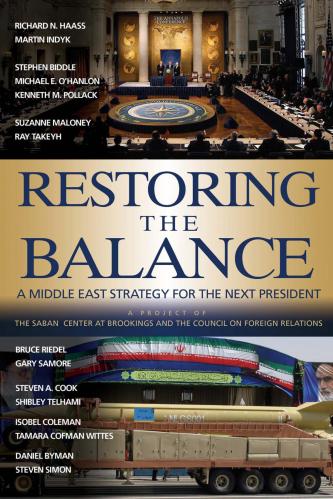

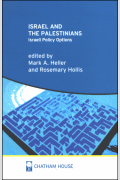
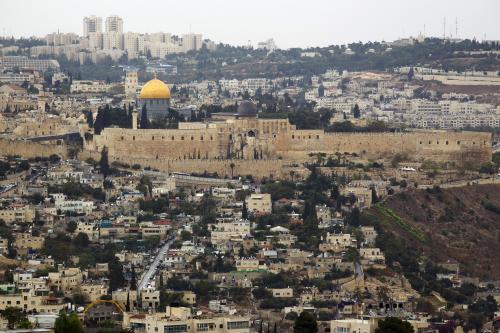
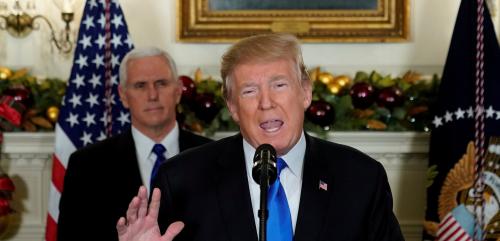
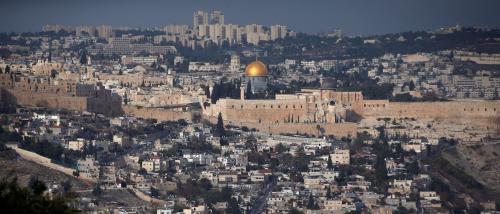
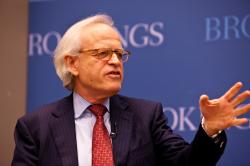


Commentary
Donald Trump’s Jerusalem move may prove too clever by half
December 8, 2017